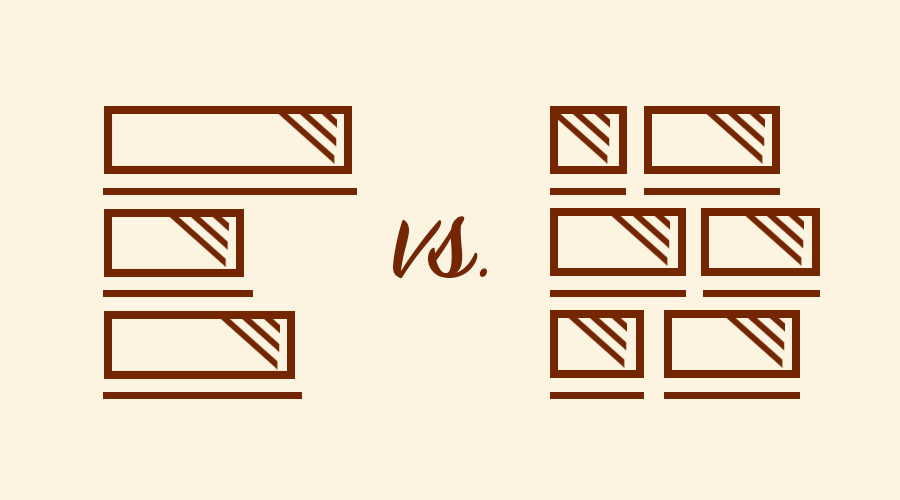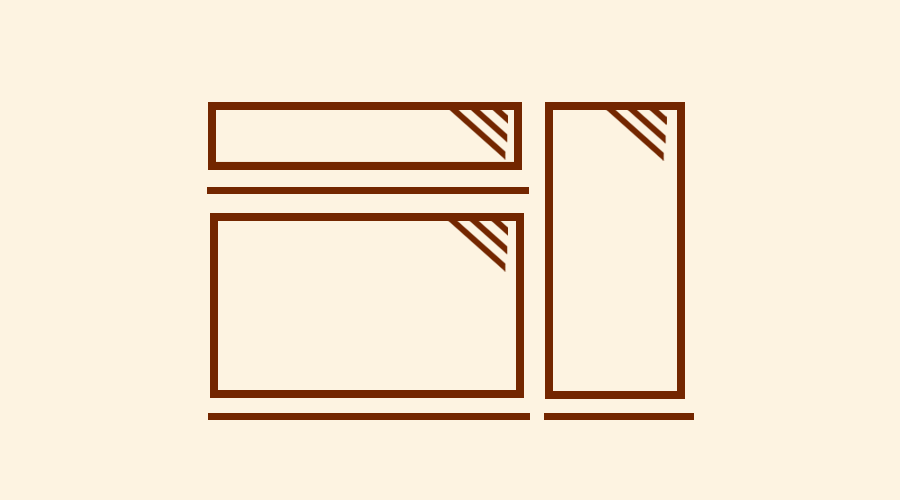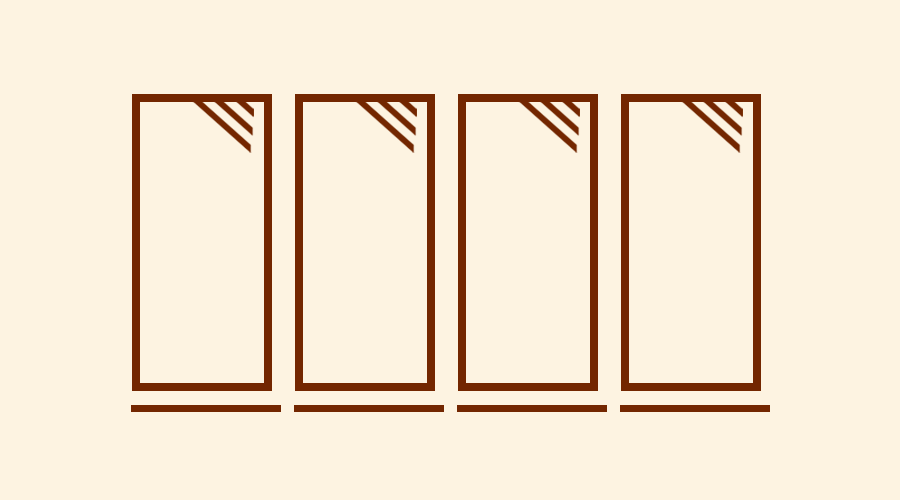Beginners guide to
HTML5 coding
This is an example usuage of FlatBook WordPress theme. We would like to show the possibilities of this ebook selling landing page template.

Get our free 5+1 lessons starter course
Why learn html5
Just as this article on about.com says that html5 adds a lot of new features to the usual html specification.
Easy implementation
The nav element is used for the part of a website that links to other pages on the site. The links can be organized a number of ways. Below, the links are displayed within.
Dynamic page support
The header element can be used to group together introductory elements on a website, such as a company logo, navigation items, and sometimes, a search form.
New useful elements
The footer element is typically found at the bottom or foot of a webpage. It can contain copyright information, links to social media and additional site navigation items.
Live theme customizer
Web languages need regular upgrades in order to stay current and solve new issues faced by web developers. Html5 is the latest version of html out the market.
Elementor integrated
This more semantically natural approach should also make it a lot easier for new developers to learn to code websites. Anyone who has been too intimidated by html.
Better browser support
Another of the key considerations used in HTML5 has been developing for mobile websites. The simplified syntax reduces the amount of overall code that has to be loaded.
Samples from ebook
Display the most attractive parts of your ebook in this cool interactive sample viewer! Just click on the sample name tab on the right, and you can start scrolling the chosen section, where you can also include images of course.
BLOCK & INLINE ELEMENTS

Every HTML element has a default display value, depending on what type of element it is. There are two display values: block and inline.
CONTENT MODEL
Generally, block-level elements may contain inline elements and (sometimes) other block-level elements. Inherent in this structural distinction is the idea that block elements create "larger" structures than inline elements.
DEFAULT FORMATTING
The distinction of block-level vs. inline elements was used in HTML specifications up to 4.01. In HTML5, this binary distinction is replaced with a more complex set of content categories.
While the "inline" category roughly corresponds to the category of phrasing content, the "block-level" category doesn't directly correspond to any HTML5 content category, but "block-level" and "inline" elements combined together correspond to the flow content in HTML5. There are also additional categories, e.g. interactive content.
BLOCK LEVEL ELEMENTS
Block level elements take up as much space as possible by default. Each block level element will start a new line on the page, stacking down the page. In addition to stacking vertically, block level elements will also take up as much horizontal space as possible.
The p element is an example of a block level element. Each new paragraph tag will appear on its own line vertically. Paragraphs with longer content will stretch all the way to the edge of the page.
INLINE ELEMENTS
Inline elements display in a line. They do not force the text after them to a new line. An anchor (or link) is an example of an inline element. You can put several links in a row, and they will display in a line.
CSS GRID & FLEXBOX LAYOUTS

Our comprehensive guide to CSS flexbox layout. This complete guide explains everything about flexbox, focusing on all the different possible properties for the parent element (the flex container) and the child elements (the flex items).
FLEXBOX LAYOUT
The flexbox layout (flexible box) module a W3C Candidate Recommendation as of October 2017) aims at providing a more efficient way to lay out, align and distribute space among items in a container, even when their size is unknown and/or dynamic (thus the word “flex”).
The main idea behind the flex layout is to give the container the ability to alter its items’ width/height (and order) to best fill the available space (mostly to accommodate to all kind of display devices and screen sizes). A flex container expands items to fill available free space or shrinks them to prevent overflow.
THE GRID LAYOUT
Since flexbox is a whole module and not a single property, it involves a lot of things including its whole set of properties. Some of them are meant to be set on the container (parent element, known as “flex container”) whereas the others are meant to be set on the children (said “flex items”).
If “regular” layout is based on both block and inline flow directions, the flex layout is based on “flex-flow directions”. Please have a look at this figure from the specification, explaining the main idea behind the flex layout.
CONTENT SIDEBAR LAYOUT

This defines the alignment along the main axis. It helps distribute extra free space leftover when either all the flex items on a line are inflexible, or are flexible but have reached their maximum size. It also exerts some control over the alignment of items when they overflow the line.
ORDINARY SIDEBAR
Note that that browser support for these values is nuanced. For example, space-between never got support from some versions of Edge, and start/end/left/right aren’t in Chrome yet. MDN has detailed charts. The safest values are flex start.
There are also two additional keywords you can pair with these values: safe and unsafe. Using safe ensures that however you do this type of positioning, you can’t push an element such that it renders off-screen (e.g. off the top) in such a way the content can’t be scrolled too (called “data loss”).
WIDGETIZED SIDEBARS
Flexbox requires some vendor prefixing to support the most browsers possible. It doesn’t just include prepending properties with the vendor prefix, but there are actually entirely different property and value names. This is because the Flexbox spec has changed over time, creating versions.
Perhaps the best way to handle this is to write in the new (and final) syntax and run your CSS through Autoprefixer, which handles the fallbacks very well.
Alternatively, here’s a Sass @mixin to help with some of the prefixing, which also gives you an idea of what kind of things need to be done:
12 COLUMNS BOOTSTRAP GRID

Use our powerful mobile-first flexbox grid to build layouts of all shapes and sizes thanks to a twelve column system, six default responsive tiers, Sass variables and mixins, and dozens of predefined classes.
ONE COLUMN GRID
Auto-layout for flexbox grid columns also means you can set the width of one column and have the sibling columns automatically resize around it. You may use predefined grid classes (as shown below), grid mixins, or inline widths. Note that the other columns will resize no matter the width of the center column.
CONTAINERS
Containers are the most basic layout element in Bootstrap and are required when using our default grid system. Containers are used to contain, pad, and (sometimes) center the content within them. While containers can be nested, most layouts do not require a nested container.
BREAKPOINTS
Bootstrap includes six default breakpoints, sometimes referred to as grid tiers, for building responsively. These breakpoints can be customized if you’re using our source Sass files.
Want to see more?
Hit the amazing button below to purchase this HTML5 based ebook landing page theme.
responsive layouts

Desktop layout
Developers are also likely to be pleased with the simplified syntax for doct structuring. Lots of tags have been implemented that are clear, simple and do what they say.
Desktop layout
Lorem ipsum dolor sit amet, consectetur adipiscing elit. Sed justo arcu, luctus sit amet ornare nec, hendrerit vel erat. Fusce porta vehicula orci, viverra efficitur risus egestas eu. Curabitur ipsum est, efficitur vitae odio sit amet, interdum cursus tortor. Mauris at dapibus enim. Sed sit amet faucibus enim, eu suscipit nisi. Vestibulum lacus tellus, consectetur eu augue ut, pulvinar commodo erat. Duis eget lectus dictum nulla feugiat vestibulum. Nam orci lorem, ultrices in nibh et, porttitor tempus arcu.
Ut nec gravida nisl. Etiam in metus condimentum, molestie nisi non, luctus dui. Orci varius natoque penatibus et magnis dis parturient montes, nascetur ridiculus mus. Etiam in purus et neque rhoncus luctus vel vitae eros. Pellentesque ac fringilla tortor. Nullam hendrerit metus ac leo molestie eleifend. Cras feugiat, mi quis tincidunt ornare, libero elit facilisis nisi, quis dictum orci massa quis nisi. Suspendisse hendrerit fermentum mollis. Sed vitae justo a eros auctor tempor. Aenean placerat elementum tellus, sed mollis velit volutpat a. In dapibus, elit sed pharetra facilisis, odio ligula porta velit, a faucibus turpis elit vel purus.
Donec sed nulla aliquet, dictum sapien a, sagittis eros. Duis tempus sagittis tincidunt. Sed magna ipsum, finibus eget metus lacinia, mollis fringilla nibh. Curabitur id hendrerit mi, vel molestie libero. Ut laoreet tincidunt molestie. Phasellus nec interdum urna, quis luctus arcu. Morbi ornare commodo consequat. Nunc magna mi, luctus sed hendrerit non, tristique vitae eros. Nullam mattis justo a odio rutrum, nec molestie magna volutpat. In egestas mi et arcu convallis, quis faucibus dolor pretium.
Nullam dignissim vehicula egestas. Fusce porttitor lectus ut ex congue, sit amet dictum quam iaculis. Nunc euismod tincidunt aliquam. Donec auctor lacus in sapien rutrum, a mattis ipsum convallis. In eget quam varius, viverra ex sed, iaculis turpis. Vivamus vitae neque congue, egestas velit ac, egestas lacus. Vivamus ut fringilla justo. Aenean pulvinar auctor mollis. Aenean quis blandit ante. Donec quis sagittis augue. Aliquam erat volutpat.
Quisque vestibulum quam ac sapien convallis rutrum. Nam at metus vel urna tincidunt ultrices. Integer convallis mi non diam vestibulum, id pulvinar ipsum ultricies. Mauris nunc metus, hendrerit non faucibus lacinia, laoreet quis ex. Proin mi felis, ornare sed pharetra et, ornare sed turpis. Orci varius natoque penatibus et magnis dis parturient montes, nascetur ridiculus mus. Curabitur id gravida tellus, sit amet malesuada felis. Mauris sagittis ligula non tortor gravida condimentum eu sit amet dolor.
Nulla sit amet ultricies neque. Etiam viverra, risus in faucibus consequat, augue purus consectetur purus, vulputate egestas nulla dolor eget felis. Nullam bibendum lacus non malesuada aliquet. Suspendisse egestas arcu in odio bibendum, ac tincidunt augue condimentum. Fusce tincidunt diam arcu, id semper nibh egestas vitae. Vestibulum non efficitur urna. Fusce enim massa, lobortis in metus ac, finibus imperdiet quam. Nulla aliquet, nibh quis convallis viverra, turpis est rutrum purus, vel tristique sem ex sed nisi. Cras ut dolor in ante lobortis hendrerit ac sit amet dolor.
In hac habitasse platea dictumst. Maecenas iaculis, justo vitae bibendum luctus, justo libero convallis massa, hendrerit facilisis diam justo nec magna. Nunc eu libero mollis, tempus nunc et, accumsan felis. Pellentesque erat nisl, consectetur sed laoreet vitae, gravida sit amet nisl. Quisque eleifend et arcu ut vestibulum. Sed tempor nibh nec mollis varius. Phasellus lorem nulla, eleifend et diam ut, mattis cursus turpis. Nullam quis lorem ex. Donec lobortis nisi sit amet pellentesque interdum. Sed a purus suscipit ante consectetur vestibulum egestas vel nisi. Etiam fermentum lacinia velit a vestibulum. Nam convallis semper orci ut porttitor. Aliquam erat volutpat. Fusce sed varius est. Vivamus ac sapien nibh. Nullam vel elit quis neque pharetra rhoncus.

Tablet layout
This more semantically natural approach should also make it a lot easier for new developers to learn to code websites as HTML5 represents a user-friendly markup.
Tablet layout
Lorem ipsum dolor sit amet, consectetur adipiscing elit. Sed justo arcu, luctus sit amet ornare nec, hendrerit vel erat. Fusce porta vehicula orci, viverra efficitur risus egestas eu. Curabitur ipsum est, efficitur vitae odio sit amet, interdum cursus tortor. Mauris at dapibus enim. Sed sit amet faucibus enim, eu suscipit nisi. Vestibulum lacus tellus, consectetur eu augue ut, pulvinar commodo erat. Duis eget lectus dictum nulla feugiat vestibulum. Nam orci lorem, ultrices in nibh et, porttitor tempus arcu.
Ut nec gravida nisl. Etiam in metus condimentum, molestie nisi non, luctus dui. Orci varius natoque penatibus et magnis dis parturient montes, nascetur ridiculus mus. Etiam in purus et neque rhoncus luctus vel vitae eros. Pellentesque ac fringilla tortor. Nullam hendrerit metus ac leo molestie eleifend. Cras feugiat, mi quis tincidunt ornare, libero elit facilisis nisi, quis dictum orci massa quis nisi. Suspendisse hendrerit fermentum mollis. Sed vitae justo a eros auctor tempor. Aenean placerat elementum tellus, sed mollis velit volutpat a. In dapibus, elit sed pharetra facilisis, odio ligula porta velit, a faucibus turpis elit vel purus.
Donec sed nulla aliquet, dictum sapien a, sagittis eros. Duis tempus sagittis tincidunt. Sed magna ipsum, finibus eget metus lacinia, mollis fringilla nibh. Curabitur id hendrerit mi, vel molestie libero. Ut laoreet tincidunt molestie. Phasellus nec interdum urna, quis luctus arcu. Morbi ornare commodo consequat. Nunc magna mi, luctus sed hendrerit non, tristique vitae eros. Nullam mattis justo a odio rutrum, nec molestie magna volutpat. In egestas mi et arcu convallis, quis faucibus dolor pretium.
Nullam dignissim vehicula egestas. Fusce porttitor lectus ut ex congue, sit amet dictum quam iaculis. Nunc euismod tincidunt aliquam. Donec auctor lacus in sapien rutrum, a mattis ipsum convallis. In eget quam varius, viverra ex sed, iaculis turpis. Vivamus vitae neque congue, egestas velit ac, egestas lacus. Vivamus ut fringilla justo. Aenean pulvinar auctor mollis. Aenean quis blandit ante. Donec quis sagittis augue. Aliquam erat volutpat.
Quisque vestibulum quam ac sapien convallis rutrum. Nam at metus vel urna tincidunt ultrices. Integer convallis mi non diam vestibulum, id pulvinar ipsum ultricies. Mauris nunc metus, hendrerit non faucibus lacinia, laoreet quis ex. Proin mi felis, ornare sed pharetra et, ornare sed turpis. Orci varius natoque penatibus et magnis dis parturient montes, nascetur ridiculus mus. Curabitur id gravida tellus, sit amet malesuada felis. Mauris sagittis ligula non tortor gravida condimentum eu sit amet dolor.
Nulla sit amet ultricies neque. Etiam viverra, risus in faucibus consequat, augue purus consectetur purus, vulputate egestas nulla dolor eget felis. Nullam bibendum lacus non malesuada aliquet. Suspendisse egestas arcu in odio bibendum, ac tincidunt augue condimentum. Fusce tincidunt diam arcu, id semper nibh egestas vitae. Vestibulum non efficitur urna. Fusce enim massa, lobortis in metus ac, finibus imperdiet quam. Nulla aliquet, nibh quis convallis viverra, turpis est rutrum purus, vel tristique sem ex sed nisi. Cras ut dolor in ante lobortis hendrerit ac sit amet dolor.
In hac habitasse platea dictumst. Maecenas iaculis, justo vitae bibendum luctus, justo libero convallis massa, hendrerit facilisis diam justo nec magna. Nunc eu libero mollis, tempus nunc et, accumsan felis. Pellentesque erat nisl, consectetur sed laoreet vitae, gravida sit amet nisl. Quisque eleifend et arcu ut vestibulum. Sed tempor nibh nec mollis varius. Phasellus lorem nulla, eleifend et diam ut, mattis cursus turpis. Nullam quis lorem ex. Donec lobortis nisi sit amet pellentesque interdum. Sed a purus suscipit ante consectetur vestibulum egestas vel nisi. Etiam fermentum lacinia velit a vestibulum. Nam convallis semper orci ut porttitor. Aliquam erat volutpat. Fusce sed varius est. Vivamus ac sapien nibh. Nullam vel elit quis neque pharetra rhoncus.

Mobile layout
Another key considerations implemented in HTML5 has been developing for mobile on websites. The simplified syntax reduces the amount of overall code loaded.
Mobile layout
Lorem ipsum dolor sit amet, consectetur adipiscing elit. Sed justo arcu, luctus sit amet ornare nec, hendrerit vel erat. Fusce porta vehicula orci, viverra efficitur risus egestas eu. Curabitur ipsum est, efficitur vitae odio sit amet, interdum cursus tortor. Mauris at dapibus enim. Sed sit amet faucibus enim, eu suscipit nisi. Vestibulum lacus tellus, consectetur eu augue ut, pulvinar commodo erat. Duis eget lectus dictum nulla feugiat vestibulum. Nam orci lorem, ultrices in nibh et, porttitor tempus arcu.
Ut nec gravida nisl. Etiam in metus condimentum, molestie nisi non, luctus dui. Orci varius natoque penatibus et magnis dis parturient montes, nascetur ridiculus mus. Etiam in purus et neque rhoncus luctus vel vitae eros. Pellentesque ac fringilla tortor. Nullam hendrerit metus ac leo molestie eleifend. Cras feugiat, mi quis tincidunt ornare, libero elit facilisis nisi, quis dictum orci massa quis nisi. Suspendisse hendrerit fermentum mollis. Sed vitae justo a eros auctor tempor. Aenean placerat elementum tellus, sed mollis velit volutpat a. In dapibus, elit sed pharetra facilisis, odio ligula porta velit, a faucibus turpis elit vel purus.
Donec sed nulla aliquet, dictum sapien a, sagittis eros. Duis tempus sagittis tincidunt. Sed magna ipsum, finibus eget metus lacinia, mollis fringilla nibh. Curabitur id hendrerit mi, vel molestie libero. Ut laoreet tincidunt molestie. Phasellus nec interdum urna, quis luctus arcu. Morbi ornare commodo consequat. Nunc magna mi, luctus sed hendrerit non, tristique vitae eros. Nullam mattis justo a odio rutrum, nec molestie magna volutpat. In egestas mi et arcu convallis, quis faucibus dolor pretium.
Nullam dignissim vehicula egestas. Fusce porttitor lectus ut ex congue, sit amet dictum quam iaculis. Nunc euismod tincidunt aliquam. Donec auctor lacus in sapien rutrum, a mattis ipsum convallis. In eget quam varius, viverra ex sed, iaculis turpis. Vivamus vitae neque congue, egestas velit ac, egestas lacus. Vivamus ut fringilla justo. Aenean pulvinar auctor mollis. Aenean quis blandit ante. Donec quis sagittis augue. Aliquam erat volutpat.
Quisque vestibulum quam ac sapien convallis rutrum. Nam at metus vel urna tincidunt ultrices. Integer convallis mi non diam vestibulum, id pulvinar ipsum ultricies. Mauris nunc metus, hendrerit non faucibus lacinia, laoreet quis ex. Proin mi felis, ornare sed pharetra et, ornare sed turpis. Orci varius natoque penatibus et magnis dis parturient montes, nascetur ridiculus mus. Curabitur id gravida tellus, sit amet malesuada felis. Mauris sagittis ligula non tortor gravida condimentum eu sit amet dolor.
Nulla sit amet ultricies neque. Etiam viverra, risus in faucibus consequat, augue purus consectetur purus, vulputate egestas nulla dolor eget felis. Nullam bibendum lacus non malesuada aliquet. Suspendisse egestas arcu in odio bibendum, ac tincidunt augue condimentum. Fusce tincidunt diam arcu, id semper nibh egestas vitae. Vestibulum non efficitur urna. Fusce enim massa, lobortis in metus ac, finibus imperdiet quam. Nulla aliquet, nibh quis convallis viverra, turpis est rutrum purus, vel tristique sem ex sed nisi. Cras ut dolor in ante lobortis hendrerit ac sit amet dolor.
In hac habitasse platea dictumst. Maecenas iaculis, justo vitae bibendum luctus, justo libero convallis massa, hendrerit facilisis diam justo nec magna. Nunc eu libero mollis, tempus nunc et, accumsan felis. Pellentesque erat nisl, consectetur sed laoreet vitae, gravida sit amet nisl. Quisque eleifend et arcu ut vestibulum. Sed tempor nibh nec mollis varius. Phasellus lorem nulla, eleifend et diam ut, mattis cursus turpis. Nullam quis lorem ex. Donec lobortis nisi sit amet pellentesque interdum. Sed a purus suscipit ante consectetur vestibulum egestas vel nisi. Etiam fermentum lacinia velit a vestibulum. Nam convallis semper orci ut porttitor. Aliquam erat volutpat. Fusce sed varius est. Vivamus ac sapien nibh. Nullam vel elit quis neque pharetra rhoncus.
Behind the scenes

David Russo
Proin gravida nibh vel velit auctor aliquet enean sollicitudin, lorem quis bibendum auctor, nisi elit consequat ipsum, nec sagittis uis sed odio sit amet nibh vulputate cursus a sit amet mauris. Morbi accumsan ipsum velit. Nam nec tellus a odio tincidunt auctor a ornare sed non mauris vitae erat consequat auctor eu in elit taciti sociosqu ad litora.

Jake Smith
Proin gravida nibh vel velit auctor aliquet enean sollicitudin, lorem quis bibendum auctor, nisi elit consequat ipsum, nec sagittis uis sed odio sit amet nibh vulputate cursus a sit amet mauris. Morbi accumsan ipsum velit. Nam nec tellus a odio tincidunt auctor a ornare sed non mauris vitae erat consequat auctor eu in elit taciti sociosqu ad litora.

Marie Holmes
Proin gravida nibh vel velit auctor aliquet enean sollicitudin, lorem quis bibendum auctor, nisi elit consequat ipsum, nec sagittis uis sed odio sit amet nibh vulputate cursus a sit amet mauris. Morbi accumsan ipsum velit. Nam nec tellus a odio tincidunt auctor a ornare sed non mauris vitae erat consequat auctor eu in elit taciti sociosqu ad litora.

Bobby Hasson
Proin gravida nibh vel velit auctor aliquet enean sollicitudin, lorem quis bibendum auctor, nisi elit consequat ipsum, nec sagittis uis sed odio sit amet nibh vulputate cursus a sit amet mauris. Morbi accumsan ipsum velit. Nam nec tellus a odio tincidunt auctor a ornare sed non mauris vitae erat consequat auctor eu in elit taciti sociosqu ad litora.

Jane Smith
Proin gravida nibh vel velit auctor aliquet enean sollicitudin, lorem quis bibendum auctor, nisi elit consequat ipsum, nec sagittis uis sed odio sit amet nibh vulputate cursus a sit amet mauris. Morbi accumsan ipsum velit. Nam nec tellus a odio tincidunt auctor a ornare sed non mauris vitae erat consequat auctor eu in elit taciti sociosqu ad litora.
Let's go premium
Html5 online version
€39.50
- Sed none mauris vitaeras sed
- Auctor eust elit taciti socio
- Opsum dolores adipiscing
- Auctor eust elit taciti socio
- Sed none mauris sed est
html5 ebook version
€59.00
- Sed none mauris vitaeras sed
- Auctor eust elit taciti socio
- Opsum dolores adipiscing
- None mauris vitaeras sed
- Lorem ipsum dolor estas
Make your order
So if you decided to buy the “Beginners Guide to HTML5 Coding” ebook, fill out the form below to place your order.
Get in touch
LOCATION
8122, New York, Park Lane 12.
html5ebook@flatbook.hu
OFFICE
8122, New York, Sun street 5.
PHONE
+182 918 8271 627